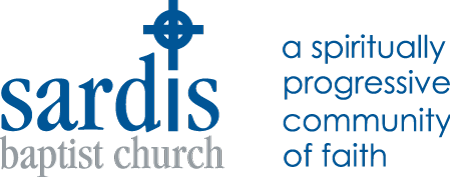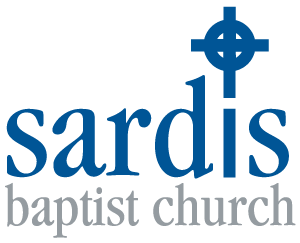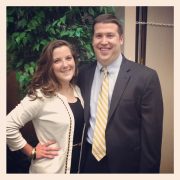Seeing is Believing
Seeing is Believing John 20_19-31 4-3-2016
Seeing is Believing
Bob Stillerman
A Sermon for Sardis Baptist Church
John 20:19-31
April 3, 2016
Our text begins:
When it was evening on that day, the first day of the week, and the doors of the house where the disciples had met were locked for fear of the authorities…
And I wonder, what kind of space was this? I didn’t live in first-century Palestine, so it’s hard for me to say. Instead, I have to let my mind wander, and the first thing I think of is the film Twelve Angry Men.
Twelve men sit in a sweltering hot jury room in New York City in the summer of 1957. They have been asked to render a verdict in what appears to be an open-and-shut murder trial. Initially, the men think they’ll only be confined to this room for a short while; one juror is even confident he’ll be done in time to catch the Yankees game that evening. But another juror, played by Henry Fonda, is convinced the accused is innocent, and he will not allow a decision to be made in haste. The jury deliberates all throughout the evening.
As the deliberations drag on, we hear the constant humming of florescent light bulbs, and the slow ticking of the second hand on an industrial clock, and the buzzing of a small, circular office fan. With each passing hour, the men grow more impatient and more cramped. The air is thick and heavy; suit jackets have been shed, and neckties loosened. And tempers flare. They are stuck in this room, until a consensus can be reached.
That’s how I picture the disciples on the first Easter. Stuck in a small, hot, dark, unventilated room, waiting to come to a consensus about what has happened. Is their ministry over? Is their teacher really dead? And if so, what will they do with the rest of their lives, assuming they can make it out of Jerusalem without being arrested, or even murdered.
These young men are tired. And scared. And confused. And grieving. And perhaps a little ashamed, and a little bewildered, and a little anxious.
The story continues:
Jesus came and stood among them and said, “Peace be with you.” And after he said this, he showed them his hands and his side. Then the disciples rejoiced when they saw the Lord.
What a well-timed entrance! In a place of heightened anxiety and discomfort, Jesus knows just what to say. “Peace, friends! Don’t worry, it’s me. And I am here. Now. With you!”
Can you imagine the sense of relief? Can you imagine how this dark, dank room must have been instantly transformed into a place of light and life?
What happens next is even better. Jesus commissions the disciples with the Holy Spirit.
Jesus says: “Again I say: Peace be with you. As the Father has sent me, so I send you.” And having said these words, he breathes on the disciples, and says to them, “Receive the Holy Spirit. If you forgive the sins of any, they are forgiven them; if you retain the sins of any, they are retained.”
Now I know what all of you are thinking, but don’t want to say out loud: So Jesus gives the disciples the Holy Spirit by breathing three-day-old, dead-guy breath on them. Gross! Did he at least pop a tic-tac before he did it?!? Come on, dude!!!
And if you haven’t familiarized yourself with Genesis or John’s prologue, you too might believe the only thing coming out of Jesus’ mouth that day was dragon breath.
But think about this for a moment. When God creates the world in Genesis, we’re told that the “ruach” or the spirit, or the breath of God, swept across the waters, and created order out of formless void. In the garden story, we are reminded that God breathed, or “ruached” life into the first human being. And in the evangelist’s prologue, we’re told it’s this ruach or spirit or Word that is made flesh – in other words, Jesus is the ruach or breath of God personified.
And here, in a dark, dank, lifeless room, Jesus breathes the spirit of God onto the disciples. Chaos becomes calm. Life overcomes death. And the disciples are filled with the substance that equips them to be God’s instruments in the world. And even better, the substance they are filled with is contagious and viral. That means the disciples have the power to fill others with the same spirit that fills them.
Friends, that’s good news, even if it smells like dragon breath!
And so our story, can end, right?
Not so fast.
It seems that one disciple was missing from our gathering. Thomas had been absent. Perhaps he had drawn the short straw, and been the one appointed to get food, or to gather intelligence in the street about where the authorities were lurking. Maybe he was on-call for the weekend, the chaplain tasked to offer prayer and healing to a nearby neighbor in need. Whatever the reason, Thomas missed Jesus’ appearance.
Upon returning, Thomas hears the story his friends recount, and declares, “I will not believe (you have seen the Lord) unless I see the mark of the nails in his hands and put my finger in that mark and in his side.”
Like a skeptical juror, Thomas will not believe unless he sees and hears for himself.
Righteous Christians throughout the ages have dubbed him “Doubting Thomas,” accusing Thomas of insincere faith. But that’s not really fair.
Thomas followed the same pattern as his peers. On Easter Morning, Mary Magdalene did not instantly recognize Jesus. As a matter of fact, her first instinct was to assume this strange figure was the one who had robbed the body. She only recognizes Jesus when he calls her name. And Peter and the beloved disciple do not instantly recognize Jesus’ presence either. And Luke’s gospel tells us that when Mary and the others shared news of resurrection with the eleven, they all dismissed it as an idle tale. And when Jesus appears to the other disciples in the locked room, it’s only after Jesus shows them his wounds that the disciples rejoice. None of the others believed without seeing. So why are none of the others labeled doubters?
But there’s something else. If Thomas left the security of the locked room, he most certainly opened himself up to the risk of being arrested. And what’s his reward for duty? He misses his commissioning, and is left to trust the words of his friends. It’s very possible that what Thomas is experiencing is grief, not doubt. He missed the big event. Perhaps he feels like an outsider, like a second-class disciple. Who wouldn’t? And so he says, “I must see for myself to really believe.”
A week later, Thomas gets his wish. Jesus reappears to the disciples in the same manner as before. And Jesus says to Thomas, “Put your finger here and see my hands. Reach out your hand and put it by my side. Do not doubt, but believe.”
Thomas responds with belief: “My Lord and My God!”
Thomas is the first of the disciples to proclaim Jesus’ identity with conviction. Upon seeing Jesus, he expresses his belief. The text tells us that Jesus invites Thomas to touch, but it doesn’t say Thomas actually touches Jesus. We’re left to interpret that seeing alone is enough for Thomas to believe.
Jesus replies, “Have you believed because you have seen me? Blessed are those who have not seen and yet have come to believe.”
Tradition has taught us to believe that Jesus’ reply is a gentle rebuke to Thomas. A little anecdote to remind us to believe better than Thomas did.
But I think that’s a poor way to interpret this line. The truth is that this gospel was written as much as 70 years after the death of Christ. John writes to an audience who at best, would have had second-hand accounts of the life of Jesus. And an audience, who just like us, will never be able to see for ourselves the events of that room on the first Easter week.
Jesus words not only bless Thomas, one who could see firsthand, but they also bless us, those who cannot see, but still believe.
The evangelist concludes his story:
Now Jesus did many other signs in the presence of his disciples, which are not written in this book. But these are written so that you may come to believe that Jesus is the Messiah, the Son of God, and that through believing you may have life in his name.
Friends, the ruach of God, that gentle breath that Jesus blew upon the disciples is still swirling around more 2,000 years later. We may never see that room, but that doesn’t mean we can’t believe in the power of the breath that brought it life. For that same breath stirs in you and me and everyone. It leaves our lips in prayers of petition, and busts through into dark places held captive to air made thick and lifeless with anxiety and fear. That same breath dances in the drumbeats of Halle, Halle, Halle reminding one and all of their good gifts to be used for God’s good purposes. And that ruach sweeps over a table of bread and grapes inviting all to experience Christ’s presence for themselves.
Friends, the earliest disciples had to see for themselves, before they could believe. But on that Easter day, Christ shared with them a breath that gives us more than sight. He shared a breath that gives us life!
So close your eyes. And draw in the breath of life. For in this breath, Christ lives, and so do we!!!
Thanks be to God!!!
Recent Sermons
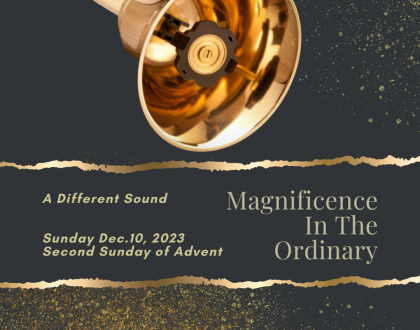
A Different Sound
December 14, 2023
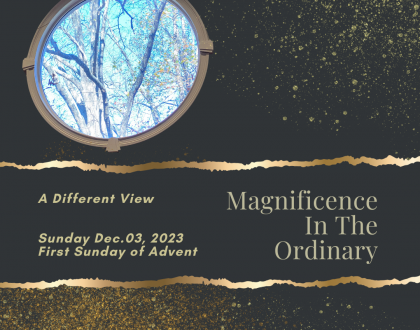
A Different View
December 04, 2023
Who Will Be Your Angel? Whose Angel Will You Be?
November 14, 2023
